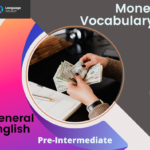Money Matters: A Fluency English ESL Lesson with free printable PDF
Money Matters

Money Matters
Money is a concept that impacts every aspect of our daily lives, from how we spend to how we view success. In this fluency-focused ESL lesson, students will engage in discussions that expand their vocabulary and understanding of the cultural and historical significance of money. Through brainstorming activities, quizzes, and fluency exercises, students will have the chance to practice expressing their opinions and thoughts on this theme in English.
Objective:
The goal of this lesson is to develop general fluency through engaging discussions around the theme of money. Students will also learn new vocabulary associated with money and its history, while practicing expressing their opinions on related topics.
Materials:
For this lesson, students will use the “Money” from A-Z of Discussions Advanced worksheet. This resource includes a variety of questions, vocabulary, and scenarios related to money, helping students engage with the topic at different levels.
Procedure:
1. Warm-Up: Begin by reading aloud the historical uses of money and its alternatives, as outlined in the “A-Z of Discussions” sheet (CUP 1997). This will give students a historical context for the conversation and provide some interesting facts to spark discussion. Some of the key points could include:
- The use of beads made from shells by American Indians
- Cowrie shells in India and whale teeth in the Fiji Islands
- Tobacco as a form of money in early North America
- The use of sweets and tokens in modern holiday camps and slot machines
2. Brainstorming Activity: Engage the class with a brainstorming session. Write the following questions on the board and ask students to share their opinions or experiences.
- How do people get rich?
- Who deserves to be rich? (Entrepreneurs? Celebrities?)
- How does money affect and change people?
- Do you believe that money makes the world go round?
- Is money the root of all evil?
- Are we too focused on money nowadays?
Encourage students to provide examples and expand on their answers, offering new vocabulary and expressions as they discuss these questions. This section will encourage critical thinking and deeper reflections on how money affects both individuals and societies.
3. Read Through the Questions and Quiz: Next, hand out the “Money” worksheet from the A-Z of Discussions and go through the questions and quizzes together. Discuss the various topics in the worksheet, such as the evolution of currency, how different cultures use money, and current issues surrounding finance.
4. Current Affairs Discussion: If time permits, ask the students about their opinions on recent changes in global currencies. Use the following questions to facilitate a discussion:
- In your opinion, has the cost of living increased? Has it affected you personally?
- Do you agree with Italy’s decision to join the Euro?
- Do you like using the Euro, or did you prefer your “old” currency?
This segment will allow students to apply their fluency skills to real-world topics and practice discussing current affairs in English.
Workshop – Fluency: Warm-Up Reading
Use the following passage as a reading activity to help students improve their fluency:
The History of Money:
“Really, anything which is accepted can be used as money, and many items over the centuries have served this purpose. American Indians have used beads made from shells; in India, cowrie shells, and in the Fiji islands, whale teeth; the early colonists of North America utilized tobacco; cigarettes and liquor were used after the Second World War in Germany, and some southern Europeans used sweets as small change. Today, in some holiday camps, plastic beads made into bracelets and necklaces are used instead of money; and tokens are, of course, a common substitute in slot machines.
The wide use of cattle in primitive times survives in the word ‘pecuniary,’ from the Latin ‘pecus’ meaning cattle; and the word ‘salary’ reminds us of how Roman soldiers used to be paid in salt. Coins began to be employed regularly in the seventh century in a Greek state in Asia Minor. Originally, they were very heavy and made of a mixture of silver and gold. In this period, coins were also used to spread propaganda about the power of the ruler whose head was shown on the coin. Coins were also used as amulets and for decorative purposes. The use of paper money only began about 200 years ago.”
After reading the passage, ask students to summarize the main points. Then, engage them in a discussion about the history of money:
- What forms of money have existed in different cultures?
- Why do you think money is such an important concept for societies?
- Do you think people today would accept things like cigarettes or sweets as money? Why or why not?
Vocabulary Expansion:
As students explore the concept of money, provide them with new vocabulary related to finances, history, and current issues. Some of the terms to focus on include:
- Currency: A system of money used in a particular country or region.
- Wealth: The abundance of valuable resources or material possessions.
- Affluent: Having a lot of money or wealth.
- Transaction: An instance of buying or selling something.
- Expenditure: The action of spending money.
- Capitalism: An economic system where private individuals own the means of production and distribution of goods.
By the end of this lesson, students will have practiced fluency in discussing money, both historically and in modern times. They will have expanded their vocabulary, shared personal opinions, and engaged with global issues related to finance and economy.
Don’t forget to download your worksheet and dive into these engaging discussions in your next ESL class!

📩 Want more free ESL lesson plans? Share this post with other teachers and let us know how it worked in your classroom!
💬 What other topics would you like lesson plans on? Drop your ideas in the comments!

DOWNLOAD THE PDF FOR FREE






